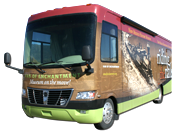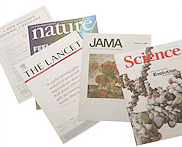Community Embraces New Word Game at Mid-Year Play Day This past Sunday, families at Takoma Park’s Seventh Annual Mid-Year Play Day had the opportunity to experience OtherWordly for the first time. Our educational language game drew curious children and parents to our table throughout the afternoon. Words in Space Several children gathered around our iPads […]
Read moreAuthor: IDEA
 Swirling a tasting of beer in my plastic glass, I was curiously intrigued by the presenter’s explanations about Trappist monks breaking off from the Cistercian order, the impacts of iso-amyl acetate (banana) and ethyl hexanoate (green apple) on flavor, and how dealing with soft water led to curious additions to beer, like oysters and seawater. (more…)
Swirling a tasting of beer in my plastic glass, I was curiously intrigued by the presenter’s explanations about Trappist monks breaking off from the Cistercian order, the impacts of iso-amyl acetate (banana) and ethyl hexanoate (green apple) on flavor, and how dealing with soft water led to curious additions to beer, like oysters and seawater. (more…)
Smartphones (e.g., the iPhone or Android) are commonplace, and education outreach projects need make use of this reality. People use their smartphones while doing all kinds of things. For example:

(Left to right, top: while waiting in line, socializing, in the bathroom, while watching TV; bottom: while using a computer, playing video games, reading a paper, or a book.)
The most common place to use a smartphones is at home (93% of smartphone owners), but people use their smartphones all kinds of places: (more…)

IDEA’s second mobile app, WikiNodes (see app store link) puts the encyclopedic knowledge of Wikipedia at the fingertips of iPad users. Articles are displayed as nodes that can be touched, dragged and spun around — showing the relations between articles and sections of articles. The app is currently featured in Apple’s app store.
Here’s a 30 second demo:
The app is based on IDEA’s SpicyNodes system for displaying and navigating information using nodes (see SpicyNodes.org). The SpicyNodes approach has great potential for other subjects, from browsing museum collections and archives, to browsing flora & fauna, and many other kinds of linked data.
Virtual exhibits on tablet devices (e.g., the Apple iPad) put exhibits at the fingertips of students and the public. Visitors can browse science, art or culture from classrooms, during their commutes, or from their sofas. — But where does the money come from?
As with physical museums, the problem with charging money for downloads is limiting visitation to enthusiasts. Access must free to get significant use on tablet computers in classrooms, or by people who would not otherwise pay. Aside from grant support or advertisements, are there other revenue models? Could funding come from the community?
We posit that virtual exhibit apps could be free downloads, giving a preview teaser. Then, to see the rest of the exhibit, visitors pay for access, sponsor access for others, or request free access. Here’s how it might look: (more…)
 There is no better way to reach underserved audiences than to drive directly to them. Mobile museums, in converted RVs or semi-trailers, are delivering history, science and art experiences. Here are two great examples.
There is no better way to reach underserved audiences than to drive directly to them. Mobile museums, in converted RVs or semi-trailers, are delivering history, science and art experiences. Here are two great examples.
History
Reaching rural audiences for $10.71 per visitor, the “Van of Enchantment” brings cultural history to schools and public events in New Mexico — at no cost to visitors. New Mexico’s rich history traces back at least 11,000 years, and includes a flourishing Pueblo community in the 13th century, Spanish conquistadors and colonists in the 16th century, and railroads in the late 19th century. (more…)
 The system of getting knowledge about science to the public is broken. One major crack in the system is a disconnect between science museums and new science research.
The system of getting knowledge about science to the public is broken. One major crack in the system is a disconnect between science museums and new science research.
Science museums matter
Aside from the news media, which now has less science coverage as the journalism business contracts, museums play a vital role in how the public learns about science outside of school. New data show that science museums play an important part in this informal learning.
Despite enthusiastic scientists who are using social media, leading citizen science, and supporting other kinds of outreach, the vast majority of scientific information is ensconced in journals and conferences.
To connect this knowledge to the public, it’s common practice for closed-access journals to give journalists free (advance) access to new articles. But the same courtesy is not provided to science museums that would also benefit from new articles, as well as a back library of older articles. And science museums rarely budget for journal subscriptions. (more…)
![]() Over 70% of U.S. museums are in economic distress, according to a new report from the American Association of Museums. Here are some key findings: (more…)
Over 70% of U.S. museums are in economic distress, according to a new report from the American Association of Museums. Here are some key findings: (more…)
 Is the art enough? Probably not. Art museum revenues are falling and museums need to experiment with new business models and ways to build a buzz and relevance with young audiences.
Is the art enough? Probably not. Art museum revenues are falling and museums need to experiment with new business models and ways to build a buzz and relevance with young audiences.
Yesterday, art critic Judith Dobrzynski wrote in her Real Clear Arts blog about how an upcoming nighttime event at the Hirshhorn is elitist, flaunted, and inexcusable. Dobrzynski says, “I’ve said it before, but I’ll say it again, if museum officials don’t believe that art is enough, no one else will either.” What do you think? (more…)
 Innovation takes years, if not decades. An essay by Bill Buxton, principal scientist at Microsoft Research, introduced the idea of the “The Long Nose of Innovation.” In his Jan 2008 Business Week article, he draws parallels to the ‘long tail’ of products. This has applications to all kinds of planning.
Innovation takes years, if not decades. An essay by Bill Buxton, principal scientist at Microsoft Research, introduced the idea of the “The Long Nose of Innovation.” In his Jan 2008 Business Week article, he draws parallels to the ‘long tail’ of products. This has applications to all kinds of planning.
This is what the long nose looks like as a graph (it’s a nose pointing to the left): (more…)
![]() Fast talks enliven conferences. Ignite and TEDx are two models of fast-paced, engaging and fun conferences which can be adapted for both public-oriented conferences and professional conferences. It’s a refreshing break from long lectures and panel discussions… (more…)
Fast talks enliven conferences. Ignite and TEDx are two models of fast-paced, engaging and fun conferences which can be adapted for both public-oriented conferences and professional conferences. It’s a refreshing break from long lectures and panel discussions… (more…)


